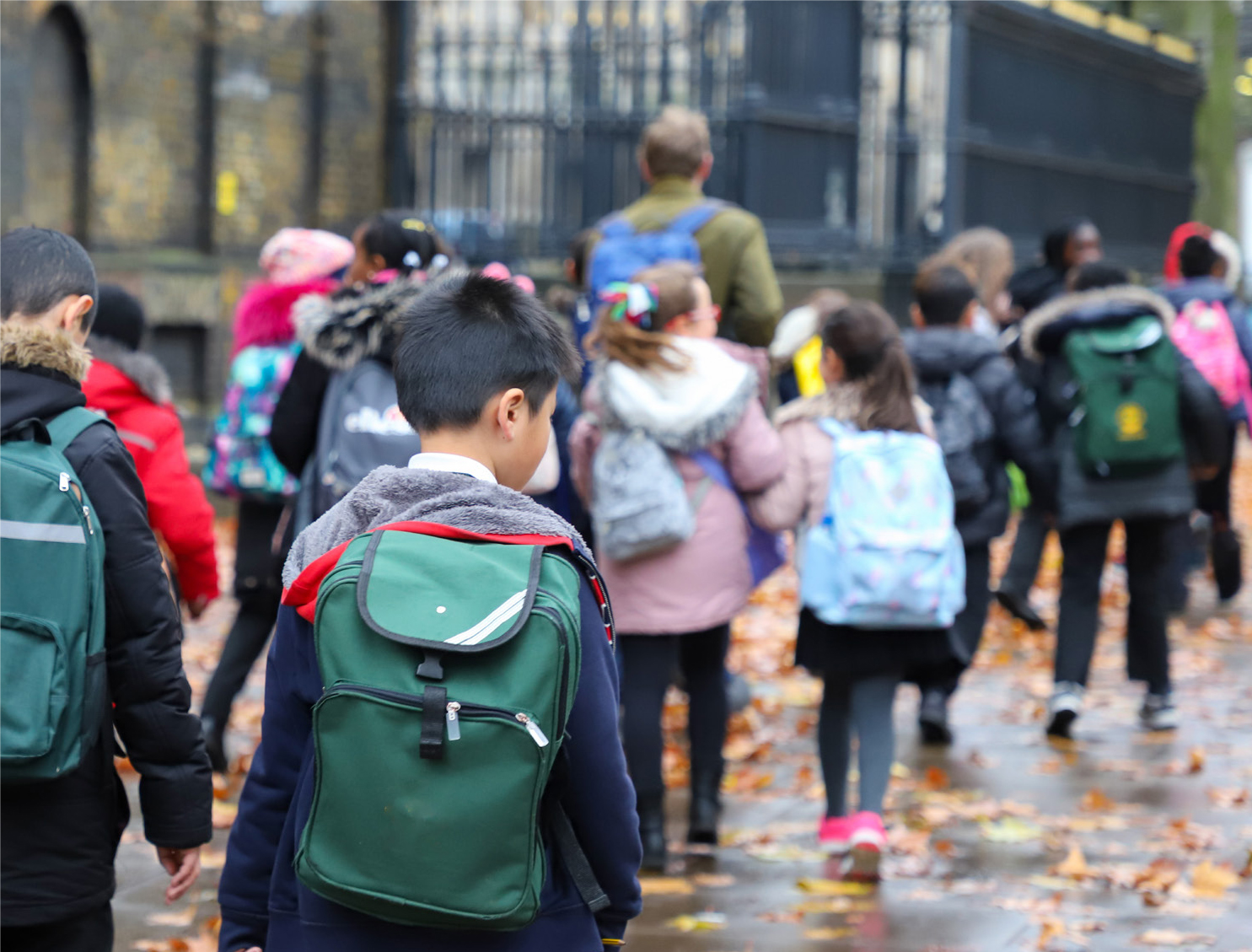The transition from primary to secondary education has long been recognised as a major challenge for children, with the potential to adversely affect academic performance, socio-emotional welfare and mental health (Zeedyk et al, 2003; Evans et al, 2018). How well the transition is handled is important, both from the child's perspective, and for society. Yet despite decades of research, there is still a great deal we don't understand about why this transition can be so stressful, or how best to mitigate that stress to protect academic performance, emotional welfare and mental health, or how to target resources to protect the most vulnerable.
One striking feature of research reviews is the sheer complexity of the phenomena revealed, and the inconsistency of findings (Evans et al, 2018). Although there is general consensus that this transition may damage academic progress and psychological welfare, there is considerable variation across studies, individuals, and groups of children. For example, whereas most studies report an increase in anxiety through this transition, some report a decrease in some groups (see Evans et al [2018] for a review).
‘…there is considerable variation across studies, individuals, and groups of children. For example, whereas most studies report an increase in anxiety through this transition, some report a decrease in some groups.’
‘The transition from primary to secondary education has long been recognised as a major challenge for children, with the potential to adversely affect academic performance, socio-emotional welfare and mental health…’

As a result, we have a number of broad-brush generalisations about the impact of the transition to secondary school, but no simple overarching account and surprisingly little useful information on how to better predict which individuals will be more adversely affected, or how to better target interventions.
‘[There is] …surprisingly little useful information on how to better to predict which individuals will be more adversely affected, or how to better target interventions.’

How to make practical sense of this welter of research? Two issues stand out: situational factors in stress, and personal factors.
Situational factors in stress in life transitions
A myriad of situational factors can be identified as exacerbating or mitigating stress in the transition to secondary school (Evans et al, 2018). What is needed is a simple structure through which individual circumstances can be interpreted.
Research on stress in adult life transitions may offer the beginning of such an account. Cohen et al (2019) describe four theories as to why life transitions (such as the move to secondary school) can be stressful. These differ in emphasis, partially overlap, and offer different practical implications. There is ongoing debate in research as to which gives the most valuable insight (Cohen et al, 2019). In fact, no one theory is likely to win that debate. Life transition stress is almost certainly not a ‘one size fits all’ situation. What best explains it may differ across individuals and across circumstances within an individual. Sometimes, one, sometimes several, sometimes all of the below may apply.
Adaptation
This theory suggests that the stressfulness of an event is a function of the amount of adaptation or change that it demands (Holmes and Rahe, 1967). The more adaptations to habits and ways of doing things a transition requires, the more different life will become, the more stressful the transition is likely to be. Changes the individual views as positive may be as stressful as negative ones, if they require a lot of adaptation (the classic adult example is the stressful impact of the birth of a longed-for baby [Vismara et al, 2016]). Different children may face different demands for adaptation as they start secondary school, and understanding those may identify individuals facing greater need to adapt, hence greater risk from stress.
Threat or harm
This theory argues that life changes are stressful as a function of how harmful or threatening they seem. The greater the threat, the less controllable, the greater the stress (Lazarus and Folkman, 1984; Cohen et al, 2016). The transition to secondary school often seems threatening to the young, with fears of bullying and loneliness for example (Evans et al, 2018). Again, this may vary between children, predicting greater stress for some.
Demands exceed resources
Here, the suggestion is that stress is caused when the demands of a new situation exceed the individual's resources, or at least, exceed his or her perception of their capabilities (Cohen et al, 2019; Karasek et al, 1981). It is easy to see how the transition from primary to secondary school might trigger stress in this way, as a child who has coped well with the academic and social demands of primary school meets new and unfamiliar challenges, a new emphasis on grades and performance. The more able, the more self-confident will cope better and need less support.
Threats to one's sense of identity
There is increasing evidence that life changes which challenge our sense of who we are, our core identity, generate the most stress (Praharso et al 2017; Cohen et al, 2019). To some extent, every child entering secondary school is likely to experience a challenge to their core identity as they move from the responsibilities and pride of being at the top of the primary school to the humbler position of member of the entry class. New academic challenges, more competitors may shift identity from ‘big fish in a small pool’ to ‘small fish in a big pool’. New social groups mean status and popularity must be re-established. Some will feel this challenge to identity more than others.
Personal factors in stress in life transitions
Whatever the stressor, individuals vary in resilience (Ellis et al, 2017), and this is certainly true of the transition to secondary school (Evans et al, 2018). Some of the reasons for this are implied by the theories noted above: individuals will differ in the level of adaptation the transition requires, in their perception of the threat in the new situation, their confidence in meeting challenges and the extent to which their core identity is challenged – and therefore in the levels of stress experienced. But these factors do not wholly explain individual variation in vulnerability.
Personality affects resilience (Thornton and Gliga, 2021). Lionetti et al (2018) identified three basic personality types of relevance here: ‘dandelions’ who are pretty much resistant whatever may happen, ‘orchids’ who like that tender plant are very vulnerable to any sort of stress, and ‘tulips’ who fall somewhere in between. There is good evidence that genetics and prenatal events play a key role in setting these temperament types – but parenting, and wider social support can also have an impact (Thornton, 2021).
Poor mental health before the transition is another risk for stress. Most mental health problems start in childhood or early adolescence (Kessler et al, 2007), often becoming established around the time of the transition to secondary school. Is this transition a factor in triggering these problems – or is it simply coincidental with other factors (such as the hormonal and psycho-social changes of puberty) which can also affect mental health? More research is needed on this.
Children with special needs are, unsurprisingly, more at risk from stress in the transition to secondary school. Research has started to explore the bases of the difficulties, and what might be done to anticipate, problems and protect individuals (Hughes et al, 2013).
Children from lower socio-economic groups are also more at risk of stress-related problems through the transition to secondary school (Hughes and Tucker, 2018; Evans et al, 2018). These children may face more than one stressor as they make the transition – families with poorer finance often struggle on many fronts. Multiple stressors may multiply stress (Monroe, 2008), but this is not always the case: a single stressor may generate so much stress that further problems do not increase the burden (Wetherington et al, 1995).
Supporting the transition to secondary school
As has long been known, by far the best protection through the transition to secondary school is social support. Children who have supportive peers, family and school experience less stress and fewer mental health problems than those without the support of friends and with unsupportive families (Waters et al, 2014). Research suggests that the key here is not simply whether social support buffers against change, as has generally been assumed, but more specifically, whether it protects core identity, especially where it is most at risk (Cohen, 2004; Parharso et al, 2017).


